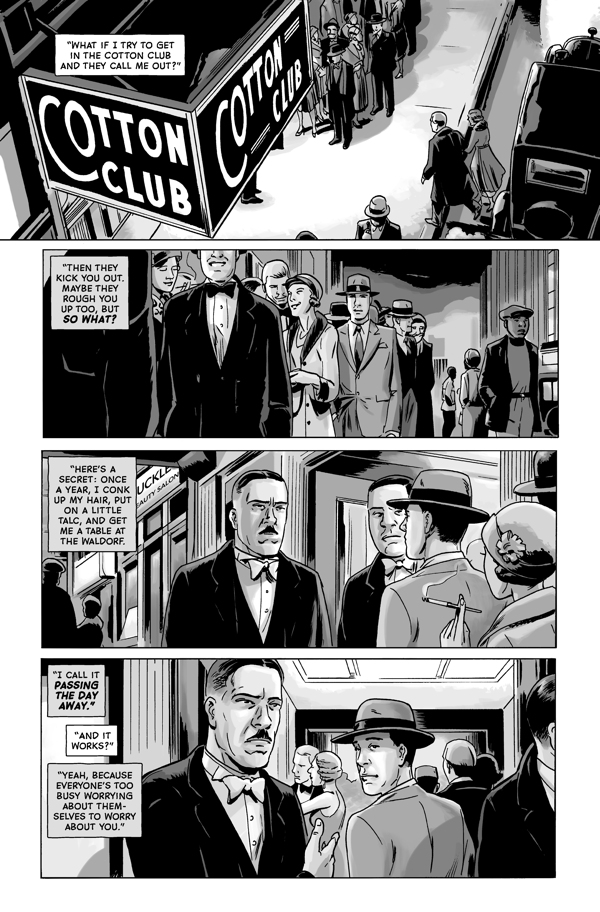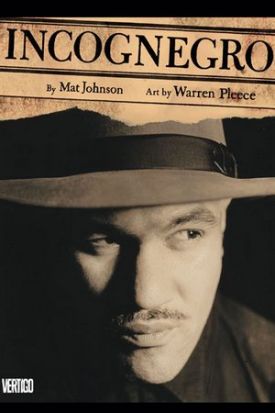

I can just decide to be a whole new Negro? So what Negro you going to be, then?” Zane looks at Alonzo and replies, “That’s the best thing: identity is open-ended. When they walk to Central Park, Zane continues to tell Alzono that he can be anything and anyone he wants to be he can construct his own identity, especially during the New Negro movement. This moment highlights the restrictions placed upon Black citizens in Tupelo, and juxtaposed against the scenes in Harlem, it shows the constructed identities placed upon them. All throughout Incognegro, we do not see Black citizens, apart from Zane, Carl, and Josiah, on the streets in the South except for here. He knows what is happening, and he knows that the same fate that Carl endures could happen to him as well. The man stands behind the white family, staring at the scene. There, the only Black man we see on the street stands behind the white man and his daughter’s as the yell at Carl while Huey and others drag him into town.

He can be anything he wants to be.Īlong with this, the scene of Black men, women, and children living life presents a distinctly different image than the situation in Tupelo, MS, and the South.

Zane’s comments tell Alonzo that no one will place their preconceived notions upon him. It ain’t like the South.” Pleece’s panel shows the brothers on the street, young Black children on the left side of the panel running and playing, Black men on the stoops talking, and Black couples walking hand in hand down the sidewalk. This is the land of Black lawyers, Black doctors, Black businessmen. When Zane and Alonzo make it to Harlem, they walk along the street and Zane tells his brother, “What can you do? You can do anything, Pinchy. specifically the manner in which identity comes to serve the needs of others, not necessarily ourselves. Each of these scenes, as the previous ones I have written about, drive home the ways that we construct identity. Today, I want to continue that discussion by looking at the last section of the graphic novel, specifically Zane’s comments to Alonzo upon arriving back in Harlem and the reveal at the end the final pages where the white citizens of Fayetteville, MO, see Huey, the Klan member, as Incognegro and label him as such. In the last post, I wrote about Zane Pinchback discussing the social constructions of race and identity in Mt Johnson and Warren Pleece’s Incognegro.


 0 kommentar(er)
0 kommentar(er)
